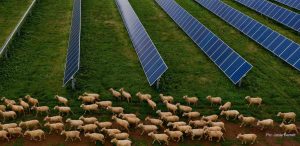A lot has changed since 2010 when Malcolm Turnbull said:
“We must move, if we are to effectively combat climate change, to a situation where all – or almost all – of our energy comes from zero or very near-zero emissions sources”.
This has created an industry which invests somewhere around $300 billion globally every year. And it gives us the means to accelerate the transition of Australia’s energy sector, which is one of the oldest and dirtiest by world standards.
So it was obviously disappointing that some of our politicians used a natural disaster several weeks ago to play cheap political games and somehow blame renewable energy for a blackout caused by freak weather.
A once-in-50-year storm took down more than 20 huge electricity towers in South Australia and the state’s entire power system several weeks ago. The event certainly reminds us – as if we needed reminding – that energy security is vital.
Energy security events are not unusual. Cyclones, coal mine fires like we saw at Morwell, the severing of the power cable that runs across Bass Strait to Tasmania and extreme heatwaves are all part of managing our electricity system.
But because responsibility for energy policy sits with both the Commonwealth and the states, buck-passing is possible, and short-term political games inevitable. And unfortunately Australia has a chequered history of political and policy stability when it comes to the energy sector.
We had a carbon tax, then we didn’t. The Renewable Energy Target (RET) has been increased, reviewed, decreased and must now be ‘harmonised’, according to our Prime Minister last week (time will tell what that means, but the industry is understandably nervous). The Australian Renewable Energy Agency was almost abolished, and lost half a billion dollars in funding this year as the first act of the new Parliament.
Such exercises only hurt our international investment reputation, making those with capital question the wisdom of sinking their money into our economy. And voters aren’t buying the blame game – two polls this week have shown the vast majority of people rightly recognise that the storm damage to transmission lines caused the recent blackout in SA.
Big changes are now underway and renewable energy is the future. The transition potentially means tens of billions of new investment dollars throughout rural and regional Australia, and tens of thousands of new jobs. Of course it comes at a cost. But the reality is that our existing coal-fired generators are old and getting older.
They need to be replaced over the coming decades and the lowest-cost solution is clearly renewable energy. The increasing cost and scarcity of gas means its role in electricity generation is shrinking rapidly, while the cost of nuclear is skyrocketing around the world. Renewable energy, combined with battery storage, is clearly the future.
There are challenges to address as we transition our energy system into the 21st century and take advantage of our massive renewable energy potential. The conversation we really need to have is about how to evolve our electricity system and rules so that it is fit for purpose for a cleaner system while maintaining energy security.
Thankfully the solutions are here now, including an energy system that is better connected and flexible, sharing low-cost power from different regions. A diversity of different energy generation sources distributed across the country would also help, and batteries are available now to help manage energy supply and demand and ensure crucial energy security.
Their role in the Australian energy system will be massive as the cost comes down and their capability is demonstrated in households, businesses and out on the grid.
But while technology is available and constantly evolving, we are missing a coherent plan for the transition to a cleaner energy mix, while maintaining reliability and security at the lowest possible cost. Hopefully, when the results are back from the energy security review being conducted by Chief Scientist Alan Finkel, we can start to get serious about planning for our clean energy future.
Kane Thornton is CEO of the Clean Energy Council.










